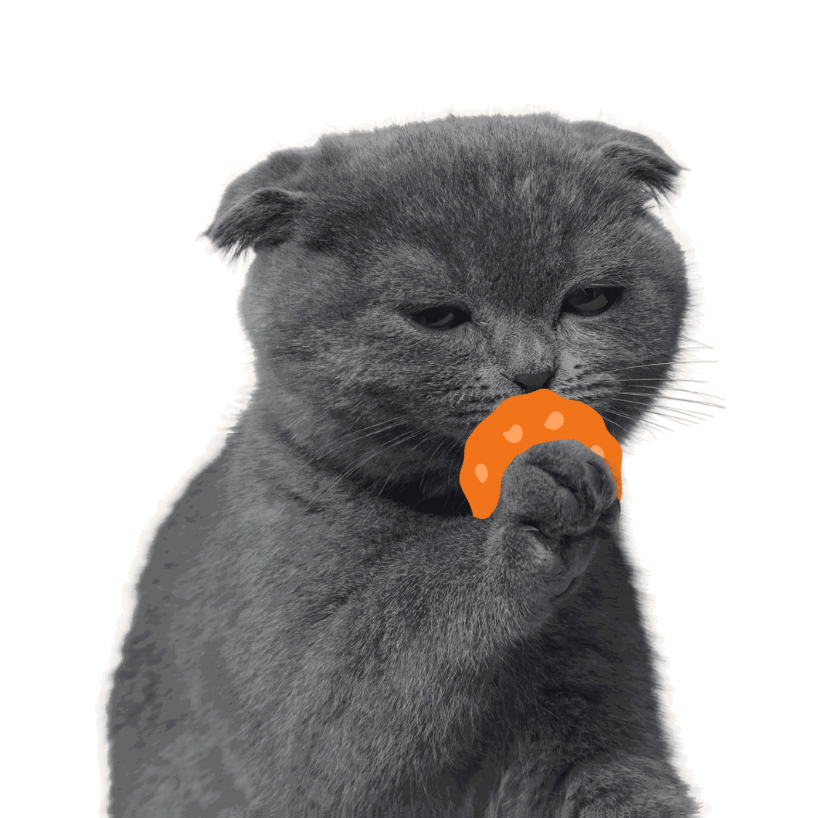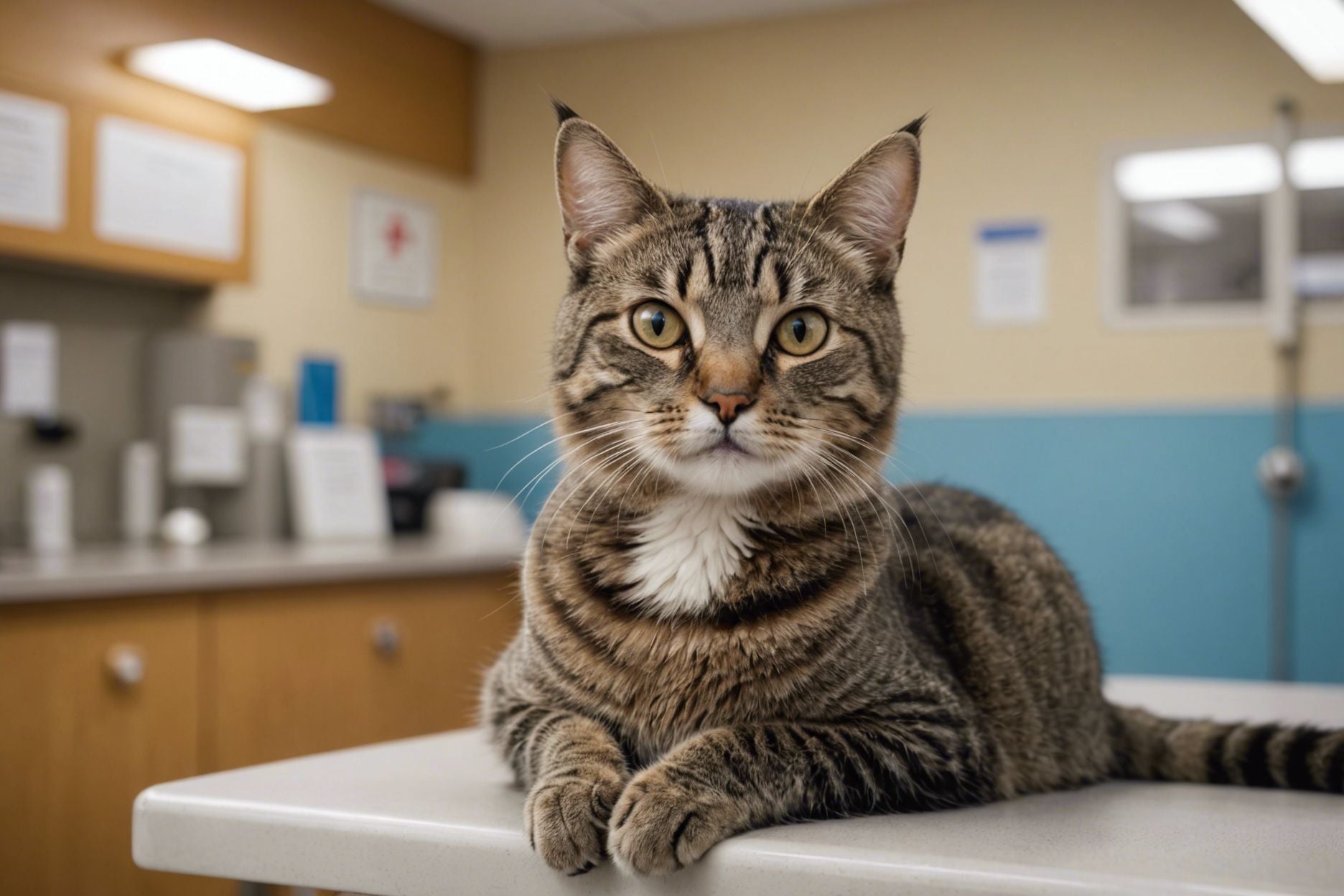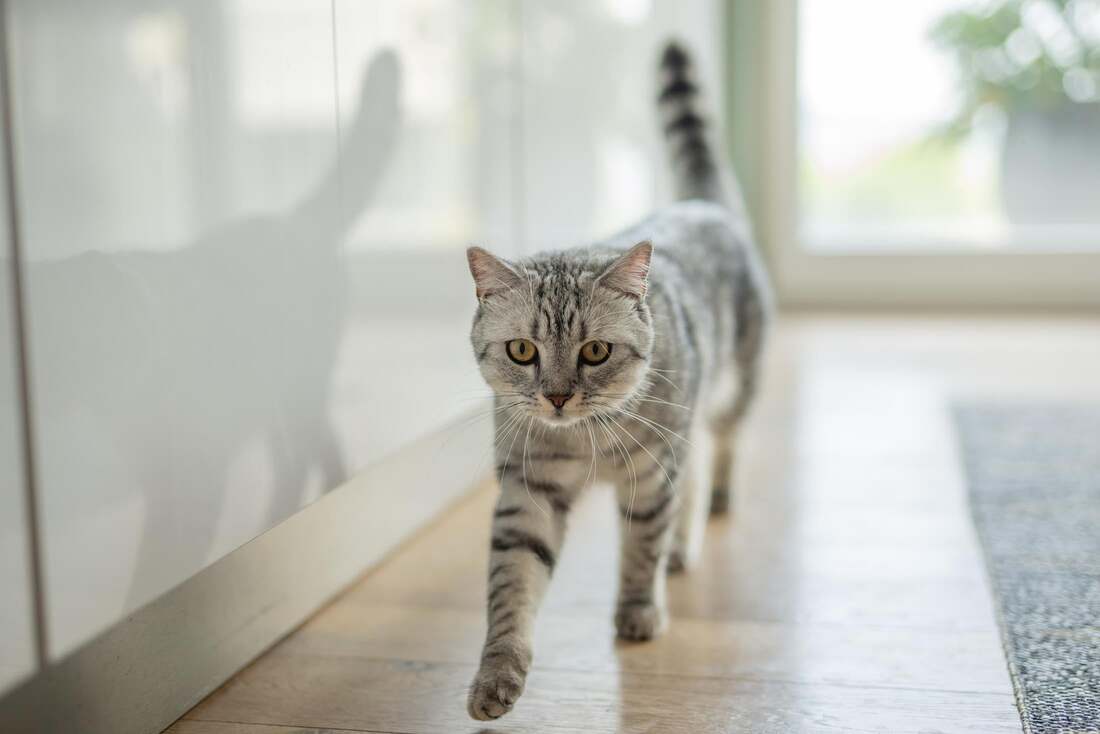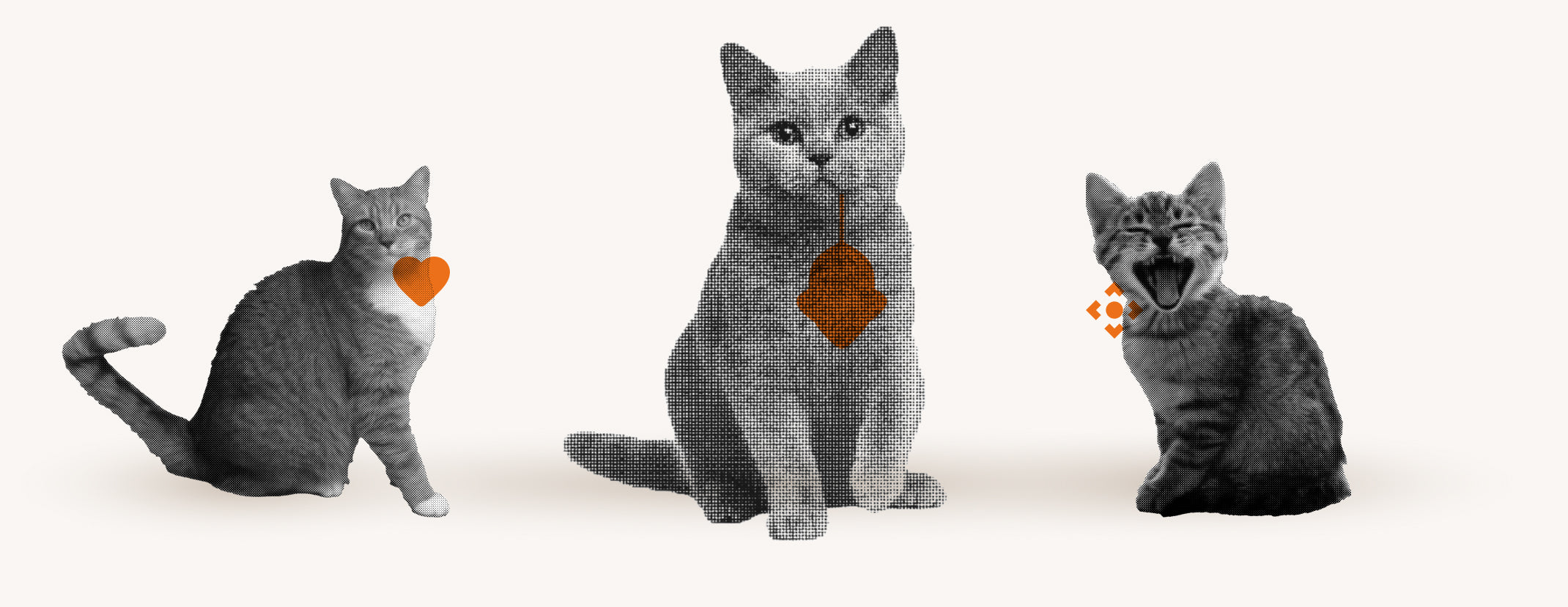If your cat isn't as active as he used to be, there could be more to it than just age.
Kidney failure in cats often goes undetected for a long time, which can lead to serious health problems.
Typical symptoms include reduced appetite, weight loss, excessive drinking and urination, bad breath, tired behavior, dull coat and frequent infections.
In this article, you will learn all about the symptoms, causes, treatment options and how you can recognize and prevent kidney problems in your cat early.
Understanding Kidney Function in Cats
The kidneys play a crucial role in your cat's health. Not only are they responsible for the excretion of urinary substances such as urea and other toxins, but they also regulate the water and electrolyte balance. This helps to protect your cat's body from poisoning. The kidneys also produce important hormones that regulate blood pressure and stimulate the formation of red blood cells.
The kidneys consist of thousands of small filtering units called nephrons . These filter a large amount of blood every day to produce urine, which is then excreted through the bladder. In doing so, they retain important nutrients and minerals in the body and ensure that:
- Toxins and urinary substances are efficiently excreted.
- the body's water balance remains in equilibrium.
- Hormones are produced that are important for various body functions.
Kidney health is therefore crucial to your cat’s well-being and quality of life.
Causes of Kidney Failure in Cats
Kidney failure in cats can be caused by a variety of causes. The most common risk factors include poisoning from house or garden plants that are toxic to cats, such as lilies. Contact with harmful substances such as antifreeze, pesticides and heavy metals can also lead to serious kidney damage. In addition, certain medications and diseases of the immune system, such as feline infectious peritonitis (FIP), can contribute to impaired kidney function.
Other causes of kidney problems in cats include insufficient blood flow to the kidneys (ischemia), infectious diseases , kidney stones or pyelonephritis . A hereditary predisposition to kidney diseases such as polycystic kidney disease (PKD) can also play a role. It is important that cat owners are aware of these risk factors in order to be able to better protect their cats. Preventive measures include avoiding poisonous plants in the home and having the cat's health checked regularly by a veterinarian.
Detecting kidney problems in cats early

Detecting kidney problems in cats early can be crucial to maintaining your cat's health and quality of life. An early sign of possible kidney disease is often increased drinking and urination . This can indicate that the kidneys are no longer able to concentrate urine properly. Other early warning signs can include weight loss, loss of appetite and shaggy fur . It is important that you do not ignore such changes in your cat's behavior and appearance and take them seriously.
In addition to the symptoms mentioned, frequent vomiting and bad breath can also indicate kidney disease. These symptoms are often subtle and can be easily overlooked, especially in the early stages of the disease. If you notice such signs in your cat, you should not hesitate to consult a veterinarian. Early diagnosis is crucial to slow the progression of the disease and maintain your cat's quality of life for as long as possible.
Treatment of Renal Failure in Cats
The treatment of renal insufficiency in cats is complex and often requires a combination of different approaches to improve the quality of life of the affected cat and slow the progression of the disease. Early detection and treatment are crucial because although renal insufficiency cannot be cured, with the right therapy the cat's life can be significantly extended and its quality of life improved. Treatment depends on the stage of the disease and the individual needs of the cat.
The main pillars of treatment include a special diet, the administration of medication, ensuring adequate fluid intake and, in some cases, the administration of infusions. These measures aim to preserve the remaining kidney function for as long as possible and to alleviate the symptoms caused by renal insufficiency. The role of diet and drug support in the treatment of renal insufficiency in cats is examined in more detail below.
The Role of Diet in the Treatment of Renal Insufficiency
An adapted diet plays a central role in the treatment of renal insufficiency in cats. Special renal diet food is designed to relieve the kidneys and minimize the accumulation of harmful metabolic products in the body. Important aspects of the diet for cats with kidney disease include:
- A reduced content of phosphorus and proteins to reduce the burden on the kidneys.
- High-quality proteins in moderate amounts to meet the cat's needs without overloading the kidneys.
- Drinking enough fluids to help the kidneys eliminate toxins.
Proper nutrition can slow the progression of the disease and significantly improve the cat's quality of life.
Drug support for renal insufficiency
Drug support for the treatment of kidney failure involves the use of various medications to relieve symptoms and treat associated health problems. Commonly used medications include:
- Phosphate binders to lower the phosphate level in the blood and relieve the kidneys.
- Medicines to lower blood pressure, as high blood pressure can accelerate kidney damage.
- Preparations to promote blood formation and relieve nausea.
These medications can help improve the quality of life of the sick cat and increase its well-being.
Recognizing Stages of Renal Failure in Cats
Kidney failure in cats develops gradually and goes through different stages that differ in symptoms and treatment approaches. In the first stage, the cat does not show any external symptoms and the creatinine levels are normal. This stage is difficult to detect because the cat appears healthy on the outside. In the second stage, mild symptoms such as increased drinking may occur and the creatinine levels are slightly elevated. This stage offers the best chance of slowing the progression of the disease through early treatment.
In the third stage of renal failure, symptoms are more pronounced, including dull coat, vomiting, and loss of appetite. Creatinine levels are moderately above normal, and a special diet and medication support is needed to maintain the cat's quality of life. In the fourth and final stage, renal function is severely impaired, leading to severe symptoms such as vomiting, dehydration, and ultimately end-stage renal failure. Treatment in this stage aims to relieve symptoms and make the cat's remaining life as comfortable as possible.
Prevention of renal failure in cats
One of the most important measures to prevent kidney problems in cats is early and regular preventive care . As soon as your cat is fully grown, you should start regular kidney checks. Annual check-ups at the vet are recommended from the age of 7 at the latest. These checks help to identify potential problems early and act accordingly. It is also important to pay attention to the composition of the food so as not to place unnecessary strain on the kidneys.
Fluid intake plays a crucial role in preventing kidney failure. Cats naturally drink little, so it is important that you encourage your cat to drink more. Here are some tips:
- Offer wet food because it contains more moisture than dry food.
- Set up several water sources to encourage the cat to drink.
- Add diluted cat milk or a drop of tuna oil to water to make it more attractive.
- Use a drinking fountain , as some cats prefer running water.
These simple steps can make a big difference and protect your cat's kidney health.
Veterinary costs for cats with kidney disease
The treatment of renal insufficiency in cats can be costly , depending largely on the severity of the disease and the therapy chosen. The main cost factors include:
- Special kidney diet food.
- Regular blood tests.
- Inpatient therapy including infusions.
- Lifelong medication.
As a rough guide, the costs for inpatient treatment can be between 400 and 1000 EUR. The monthly expenses for blood tests, kidney diet food and medication can be between 50 and 120 EUR, around 30 EUR and 30 to 100 EUR respectively. This information is only intended as a guide, because ultimately the total costs depend heavily on the individual needs of the sick cat.
The dying process in cats with kidney failure
The dying process in cats with kidney failure is often a particularly difficult time for owners. Cats in the end stages of kidney failure typically show symptoms such as nausea, vomiting, loss of appetite and severe weight loss . These signs are an indication that the cat is suffering greatly and its quality of life is significantly impaired. During this phase, it is important to work closely with the veterinarian to make the best decision for the cat's well-being.
As a cat owner, you can take a number of steps to make the dying process as gentle and painless as possible. These include:
- Creating a calm and comfortable environment where the cat feels safe and loved.
- Regular contact with the veterinarian to monitor the cat's condition and, if necessary, adjust pain medication or other palliative treatments.
Spending the final days with a beloved pet is emotionally challenging , but it is also a time when you can make a difference through loving care and support.
How Flappie Can Help Keep Your Cat Healthy
Flappie offers an innovative solution to keep your cat healthy. By preventing cats from bringing home prey such as mice and birds, Flappie reduces the risk of your cat being exposed to diseases or parasites. These prey animals can carry pathogens that can be dangerous to cats. So with Flappie you not only keep your home clean, but also keep your cat healthy.
Flappie's smart cat flap uses a camera and artificial intelligence to detect if your cat has something in its mouth. This ensures that only your cat can get into the house without any prey. The benefits of Flappie include:
- Selective access control that prevents cats from entering the house with prey.
- Prey detection by camera with AI technology that reliably identifies whether your cat is carrying prey.
- The Flappie app , which informs you via push notification if your cat tries to come home with prey. In this way, Flappie helps protect your cat from potential health risks and promotes a long, healthy cat life.
Frequently Asked Questions
How does kidney failure manifest itself in cats?
Kidney failure in cats is manifested by various symptoms such as decreased appetite, weight loss, excessive drinking and urination, bad breath, tired behavior, dull coat and frequent infections. These signs are important to pay attention to as they can indicate serious health problems.
How do you notice kidney problems in cats?
Kidney problems in cats can be recognized early by increased drinking and urination, weight loss, loss of appetite and shaggy fur. Other warning signs include frequent vomiting and bad breath. These symptoms should be taken seriously and not ignored.





Share:
Keeping your cat healthy: Tips for a long cat life
Is FIP contagious in cats? Everything you need to know